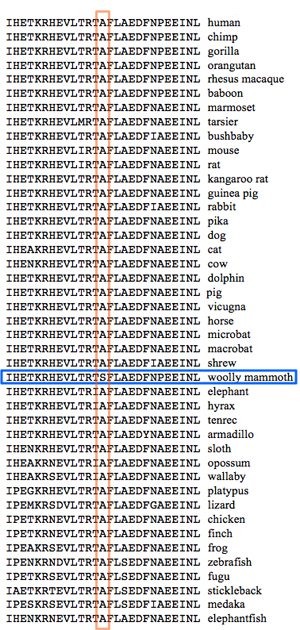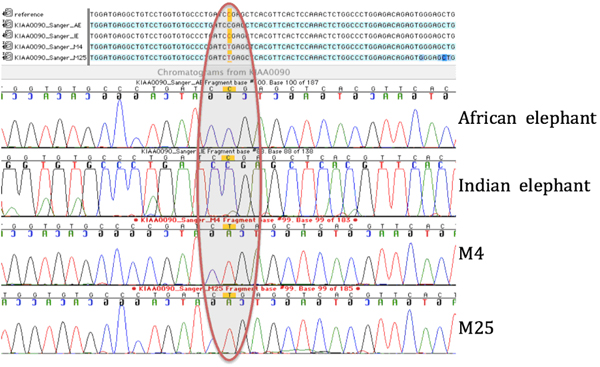 |
|||||||||||||
Which SAPs might explain the unique characteristics of mammoths? A difference between a protein in mammoths and the corresponding protein in elephants could be partly responsible for a difference between the species, such as the mammoth's longer hair and smaller ears. Scientists don't yet understand biology well enough to be able to look at a protein sequence and reliably predict the effect, if any, of making a particular change. Actually, most changes to a protein sequence probably would not have any observable effect. To find clues about which differences between mammoth and elephant protein sequences might have contributed to unique characteristics of mammoths, we looked for changes at positions where elephants have the same amino acid as all other mammals where we have data, but mammoth is different. Here is one example, where the amino acid A at position 165 of the human RABL2 protein sequence corresponds to an S in woolly mammoth. What makes this example particularly interesting is that many vertebrate proteins are identical or at least highly similar to the human protein in an interval of 27 amino acids centered on the change. One has to wonder whether a particular protein that has remained the same in most animals for several billion years of combined evolution and then became different in mammoths could result in a mammoth-specific trait. |
|||||||||||||
| We found a number of cases like this, i.e., where mammoth differed in an amino acid that appeared to be conserved in other mammals over billions of years of total branch length. This extreme evolutionary conservation suggests possible positive selection in the mammoth lineage, as the phenotypic significance of the change is underlined by the invariance in other mammals. | |||||||||||||
|
|||||||||||||
|


